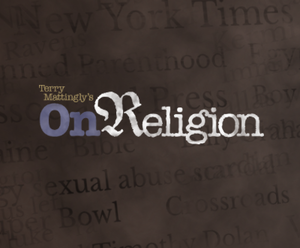
As he began his 1979 pilgrimage through Poland, Pope John Paul II preached a soaring sermon that was fiercely Catholic, yet full of affection for his homeland.
For Communist leaders, the fact that the former Archbishop of Cracow linked faith to national pride was pure heresy. The pope joyfully claimed divine authority to challenge atheism and the government’s efforts to reshape Polish culture.
“Man cannot be fully understood without Christ,” John Paul II told 290,000 at a Mass in Warsaw’s Victory Square. “He cannot understand who he is, nor what his true dignity is, nor what his vocation is, nor what his final end is. … Christ cannot be kept out of the history of man in any part of the globe, at any longitude or latitude of geography.”
That was bad enough. Then he added: “It is therefore impossible without Christ to understand the history of the Polish nation. … If we reject this key to understanding our nation, we lay ourselves open to a substantial misunderstanding. We no longer understand ourselves.”
This was the stuff of sainthood, and John Paul II received that title soon after his 26-year pontificate ended. But the global impact of that 1979 sermon is a perfect example of why many Catholics believe it’s time to attach another title to his name — “the great.”
“The informal title ‘the great’ is not one that is formally granted by the church,” explained historian Matthew Bunson, author of “The Pope Encyclopedia: An A to Z of the Holy See.”
“Every saint who is also a pope is not hailed as ‘the great,’ but the popes who have been called ‘the great’ are all saints. … When you hear that title, you are dealing with both the love of the faithful for this saint and the judgement of history.”
In the case of John Paul II, mourners chanted “Santo subito!” (Saint now!) and waved posters with that slogan at his funeral. During a Mass only 13 hours after his death, Cardinal Angelo Sodano spoke of “John Paul, indeed, John Paul the Great.”
When he was chosen to succeed John Paul II, Pope Benedict XVI’s first words to the crowd in St. Peter’s Square were, “After the great pope. …”
Discussions of attaching “the great” to this saint’s title were jumpstarted by a recent letter from Benedict XVI that marked the centenary of the birth, in the Polish town of Wadowice, of the man who would become John Paul II.
“The word ‘saint’ indicates God’s sphere and the word ‘great’ the human dimension,” wrote Benedict. The term “great” is harder to define, he added, and in the “course of the almost 2,000-year long history of the papacy, the title ‘the great’ has been maintained only for two popes: Leo I (440-461) and Gregory I (590-604). In the case of both, the word ‘great’ has a political connotation, but precisely because something of the mystery of God himself becomes visible through their political success.”
In both of those cases, Bunson said, the future of Rome and the Roman world were at risk — with Leo dealing with Attila the Hun, while Gregory I faced the invading forces of the Lombards. Pope Gregory the Great also produced epic works of theology, especially on the liturgy and the work of bishops.
“With that in mind, just look at the dramatic life of John Paul II,” Bunson said. “You start with his underground work against the Nazis, then all the ways that he stood up to Communism during the Cold War. Finally, there are his encyclicals opposing the existential threat of postmodernism — what he called the ‘culture of death’ — to the value of the human person.”
In his letter, Benedict XVI quoted the famous words of Russia’s Joseph Stalin who asked, considering Europe’s future: “How many divisions does the pope have?”
As turned out, Pope John Paul II was more than a worthy opponent.
“Let us leave open the question of whether the epithet ‘the great’ will prevail or not,” noted the retired pope. “It is true that God’s power and goodness have become visible to all of us in John Paul II. In a time when the Church is again suffering from the oppression of evil, he is for us a sign of hope and confidence.”









